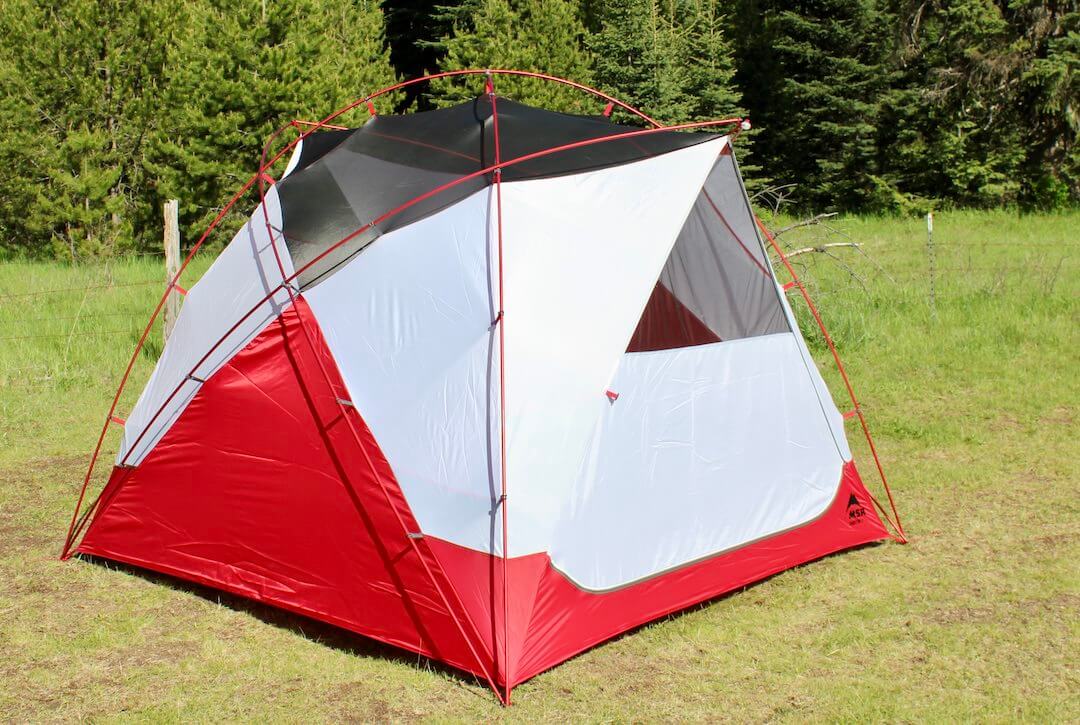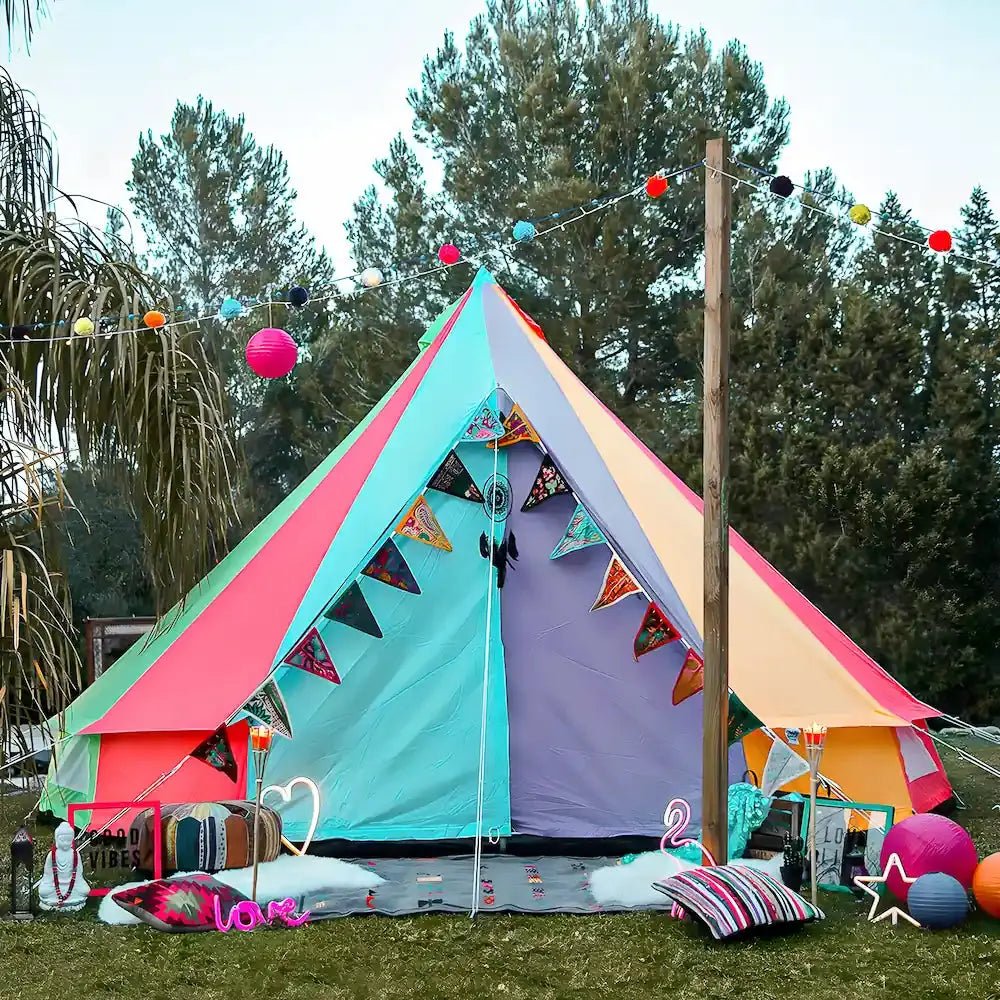
Introduction
Tent colors play a crucial role in shaping our outdoor experiences, offering aesthetic appeal, functional advantages, and even psychological benefits. Whether it’s for camping, hiking, or outdoor events, the color of a tent can significantly impact its performance in various environments and under different conditions. In this comprehensive guide, we’ll explore the diverse array of tent colors, their practical considerations, and the impact they have on our outdoor adventures. From visibility and temperature regulation to the assimilation with natural surroundings, understanding the significance of tent colors is essential in choosing the perfect shelter shade for your outdoor pursuits.
Part 1: Visibility and Safety
Level 1: High-Visibility Colors
When it comes to visibility, bright colors such as yellow, orange, and neon green are highly effective. These hues stand out in natural environments and make the tent easily identifiable, enhancing safety during emergencies or in crowded camping areas, where visibility can be crucial for navigation and security.
Level 2: Camouflage and Natural Blends
On the other hand, earth tones like green, brown, or tan allow a tent to blend in with the natural surroundings, a preferred choice for those seeking discreet camping or wildlife observation opportunities. These colors can provide a sense of security and privacy in wilderness settings, as they minimize the visual impact of the camping area.
Part 2: Heat Absorption and Temperature Regulation
Level 1: Reflective and Light Colors
Light colors such as white or light gray reflect sunlight and heat, doing a better job at keeping the interior of the tent cooler in hot climates. Their reflective properties can help maintain a comfortable temperature inside the tent during scorching days, offering respite from the heat.
Level 2: Dark and Warmer Colors
Conversely, darker colors like navy blue, deep green, and black tend to absorb more heat, making them suitable for cooler climates or colder seasons. These colors can help retain warmth within the tent, providing a cozy environment for camping in chilly weather or alpine conditions.
Part 3: Psychological Impact and Atmosphere
Level 1: Uplifting and Vibrant Tones
Bright, vibrant colors such as red, yellow, or turquoise can instill a sense of energy, excitement, and positivity, creating a lively and cheerful atmosphere at the campsite. These colors can contribute to an uplifting camping experience, particularly during social gatherings or outdoor festivities.
Level 2: Serene and Natural Hues
On the other hand, natural and calming colors like earthy greens, blues, and soft grays can evoke a tranquil and soothing atmosphere, ideal for creating a sense of relaxation and connection with nature. These colors can enhance the restful quality of the outdoor experience, promoting a peaceful ambiance for unwinding and rejuvenation.
Part 4: Durability and Maintenance
Level 1: Stain and Wear Resistance
When considering tent color, it’s important to factor in practical considerations such as stain resistance and concealment of wear and tear. Darker colors, particularly those with textured or mottled patterns, can effectively conceal dirt, stains, and signs of use, making them a practical choice for longer outdoor adventures.
Level 2: Fade Resistance and UV Protection
Lighter colors are less prone to fading due to UV exposure, retaining their appearance over time and providing better protection against sun damage. This can be advantageous for maintaining the tent’s visual appeal and structural integrity through prolonged outdoor use.
Part 5: Personal Preference and Branding
Level 1: Brand Identity and Personal Expression
Tent colors also play a role in personal expression and branding, allowing individuals and organizations to showcase their unique style and identity. Custom colors and patterns can be used to enhance personalization and distinguish a tent in crowded campsites or outdoor events.
Level 2: Cohesion and Coordination
For group camping or outdoor activities involving multiple tents, coordinating colors can promote a sense of cohesion and unity among participants. Matching or complementary colors can visually tie the camp together, fostering a harmonious and organized outdoor setting.
Part 6: Adaptation to Environmental Conditions
Level 1: Seasonal Considerations
Different tent colors can be more suitable for specific seasons. For instance, lighter colors are beneficial in hot summer months as they reflect sunlight, keeping the interior of the tent cooler. In contrast, darker colors are preferable for winter camping as they absorb heat, providing warmth and insulation against colder temperatures.
Level 2: Weather Resilience
Certain colors are better equipped to withstand adverse weather conditions. For example, bright and high-visibility colors can aid in search and rescue scenarios during foggy or snowy weather, maximizing visibility for rescue teams. Additionally, darker colors may hide stains from mud or dirt, maintaining the tent’s appearance in rugged and challenging outdoor environments.
Part 7: Cultural and Symbolic Significance
Level 1: Cultural Influences
Tent colors can carry cultural or symbolic meanings, especially in specific regions or among certain user groups. For example, in some cultures, certain colors are associated with traditions, rituals, or spiritual significance, which may influence the choice of tent color for individuals or groups adhering to those cultural beliefs.
Level 2: Symbolism and Personal Beliefs
Individuals might choose tent colors based on personal beliefs, symbolism, or sentimental attachments. A particular color may hold personal significance, evoke positive memories, or align with an individual’s values and aspirations, contributing to a deeper emotional connection with the camping experience.
Part 8: Environmental Impact
Level 1: Sustainable Material and Dye Selection
The coloration process of tent fabrics can have environmental implications. Some manufacturers prioritize sustainable dyeing techniques and eco-friendly fabric treatments to minimize environmental impact. By selecting tents made with environmentally responsible materials and dyes, outdoor enthusiasts can contribute to resource conservation and sustainable practices.
Level 2: Longevity and Disposal
The choice of tent color can also impact its lifespan and disposal. Colors that resist fading and deterioration due to UV exposure or harsh weather conditions contribute to the longevity of the tent, resulting in reduced waste over time. Furthermore, some tent colors may be more easily recyclable, aligning with eco-conscious principles for responsible product disposal and end-of-life management.
Conclusion
The selection of tent colors goes beyond mere aesthetics, encompassing practical, psychological, and environmental considerations that can significantly impact the outdoor experience. Whether it’s enhancing safety and visibility, regulating temperature, setting the ambiance, or promoting personal expression, the strategic choice of tent color can elevate the overall camping or outdoor event. By understanding the multifaceted influence of tent colors, outdoor enthusiasts can make informed decisions when selecting the perfect shelter shade for their adventures, ensuring an optimal blend of functionality and visual appeal in their camping endeavors.



